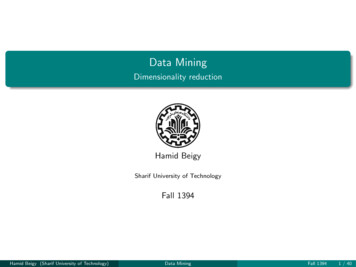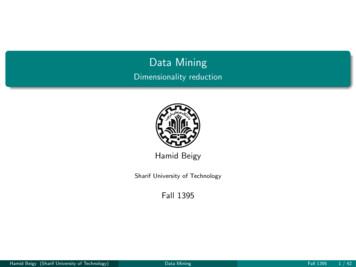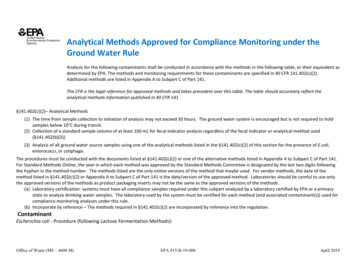
Transcription
The History and Methods of Cognitive Psychology Why look at the history of psychology?– Science as a process, not a set of answers– Borrowing and reinventing old ideas Movements in the psychology of cognition– Structuralists: 1870-1920– Behaviorists: 1920-1960– Cognitive psychology: 1956-present
Structuralism/Introspectionism Methods– Anectdotes– Describe sensory experience Avoid “stimulus error”– Stream of consciousness– Test self Ebbinghaus as a cross-over to scientific psychology Problems– Different people get different results– Cannot introspect on all processes– Introspections can be wrong
IntrospectionismWilhelm Wundt
Ebbinghaus: Tested self, but experimentally
Introspections can be wrong Unconscious influences on judgments– Right-side preference Change-blindness: difficulty detecting obvious changesfrom one scene to another– And “Change-blindness blindness” - people don’t think thatthey would have a hard time detecting obvious changes
Behaviorism Only care about behavior– Don’t hypothesize internal events Stimulus-response (S-R) psychology Align psychology with science Empiricist– Tabula rasa blank slate– Empirical uses experimental research methods Problems with behaviorism– Animals are not infinitely malleable, nor tabula rasas– Not just learning S-R combinations Tolman’s maze experiments Learning by observing - don’t need reward– Language
Not all associations are equally learnableAcquired taste aversion is very strongTaste-to-stomache-ache associations are easily built
Learnlights- shocktaste- stomache acheDon’t learnlights- stomache achetaste - shockThere’s more toassociation than simplyreinforcement history
Tolman’s cognitive mapsFoodRat learns more than just the response (route)necessary to get reward
Learning is possible even if not personally reinforcedLearning by observing (Thorndike, 1911)
Noam Chomsky: Languagecannot be learned solely bylearning stimulus-responseassociations.
Cognitive Psychology Mental processes exist and can be studiedNeed to give abstract, functional descriptions of behaviorUse rigorous empirical methodsActive processing– Not just passive response to stimulus Understanding minds through decomposition– Flow charts Information processing and representation– Transformation of information– Representation symbol that stands for something the real world– Computer metaphor
Developing Functional DescriptionsDuplicate?Add flipped shape to left side?Duplicate?Add flipped version of rightmost shape to left side?Add one?MirrorInputFABCDEFABCDEF
Flowcharts for breaking down cognition into piecesAbstract description of the stages necessary for cognition,and how the stages are ordered and transfer information
Response times for analyzing information processing
The History and Methods of Cognitive Psychology Why look at the history of psychology? -Science as a process, not a set of answers -Borrowing and reinventing old ideas Movements in the psychology of cognition -Structuralists: 1870-1920 -Behaviorists: 1920-1960 -Cognitive psychology: 1956-present











